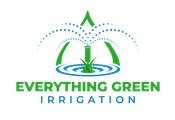Maximizing Water Efficiency in Your Irrigation System: Best Practices and Products
Water conservation is a critical consideration for homeowners and businesses, especially when it comes to maintaining a healthy and sustainable landscape. With the increasing emphasis on environmental responsibility and rising water costs, maximizing water efficiency in your irrigation system is not only beneficial for the environment but also for your budget. In this blog post, we will explore the best practices and products to help you maximize water efficiency in your irrigation system, allowing you to conserve water, save money, and promote a healthy and thriving landscape.
Install a Smart Irrigation Controller:
A smart irrigation controller is a game-changer when it comes to water efficiency. These advanced controllers utilize weather data and soil moisture sensors to adjust watering schedules automatically, ensuring that your landscape receives just the right amount of water. By avoiding overwatering and accounting for changing weather conditions, smart controllers can significantly reduce water waste and optimize plant health.
Implement Drip Irrigation:
Drip irrigation is a highly efficient method that delivers water directly to the root zone of plants, minimizing water loss through evaporation and runoff. By using a network of tubes and emitters, drip irrigation ensures precise water distribution, preventing overwatering and promoting healthier plant growth. This targeted approach can save up to 50% more water compared to traditional sprinkler systems.
Embrace Water-Efficient Sprinkler Heads:
Not all sprinkler heads are created equal when it comes to water efficiency. Opt for water-efficient options such as rotary nozzles, low-flow heads, or pressure-regulated heads. These types of sprinkler heads deliver water at a slower rate, allowing for better absorption into the soil and reducing water runoff. Additionally, adjusting the direction and range of the heads can help avoid wasteful watering of hardscapes or non-landscaped areas.
Utilize Rain Sensors and Moisture Sensors:
Rain sensors and moisture sensors are valuable tools that can help maximize water efficiency in your irrigation system. Rain sensors detect rainfall and automatically suspend watering schedules, preventing unnecessary irrigation during or after rain events. Moisture sensors measure soil moisture levels and signal the irrigation system to water only when necessary. These sensors provide real-time data, ensuring that your landscape receives water precisely when it needs it.
Regular Maintenance and Inspections:
Regular maintenance and inspections are crucial for optimizing water efficiency in your irrigation system. Check for leaks, clogs, or malfunctioning components that can lead to water waste. Ensure that sprinkler heads are properly aligned and not obstructed. Clean or replace clogged nozzles and filters. By promptly addressing issues and conducting routine maintenance, you can ensure that your system operates at its peak efficiency.
Conclusion:
Maximizing water efficiency in your irrigation system is not only beneficial for the environment but also for your wallet. By implementing best practices such as using smart controllers, drip irrigation, water-efficient sprinkler heads, and sensors, you can significantly reduce water waste and promote a healthy landscape. Regular maintenance and inspections are essential for ensuring optimal performance. Embrace these practices and invest in water-efficient products to conserve water, save money, and create a sustainable and thriving landscape for years to come.
